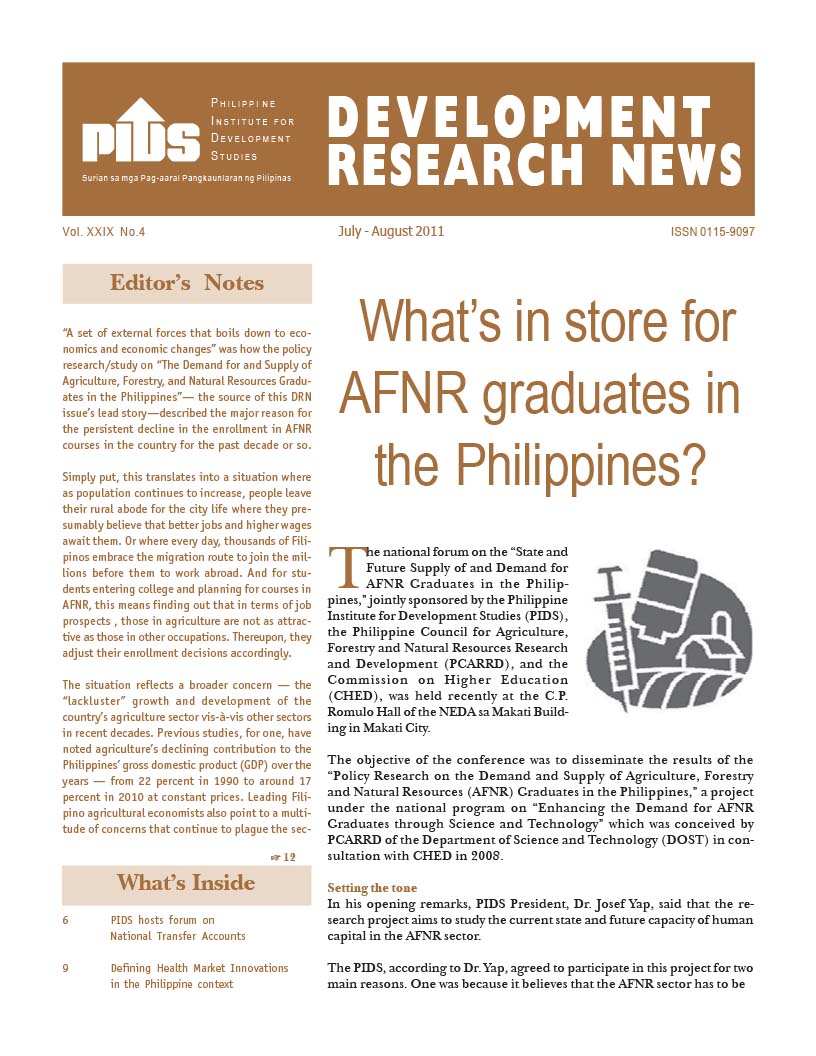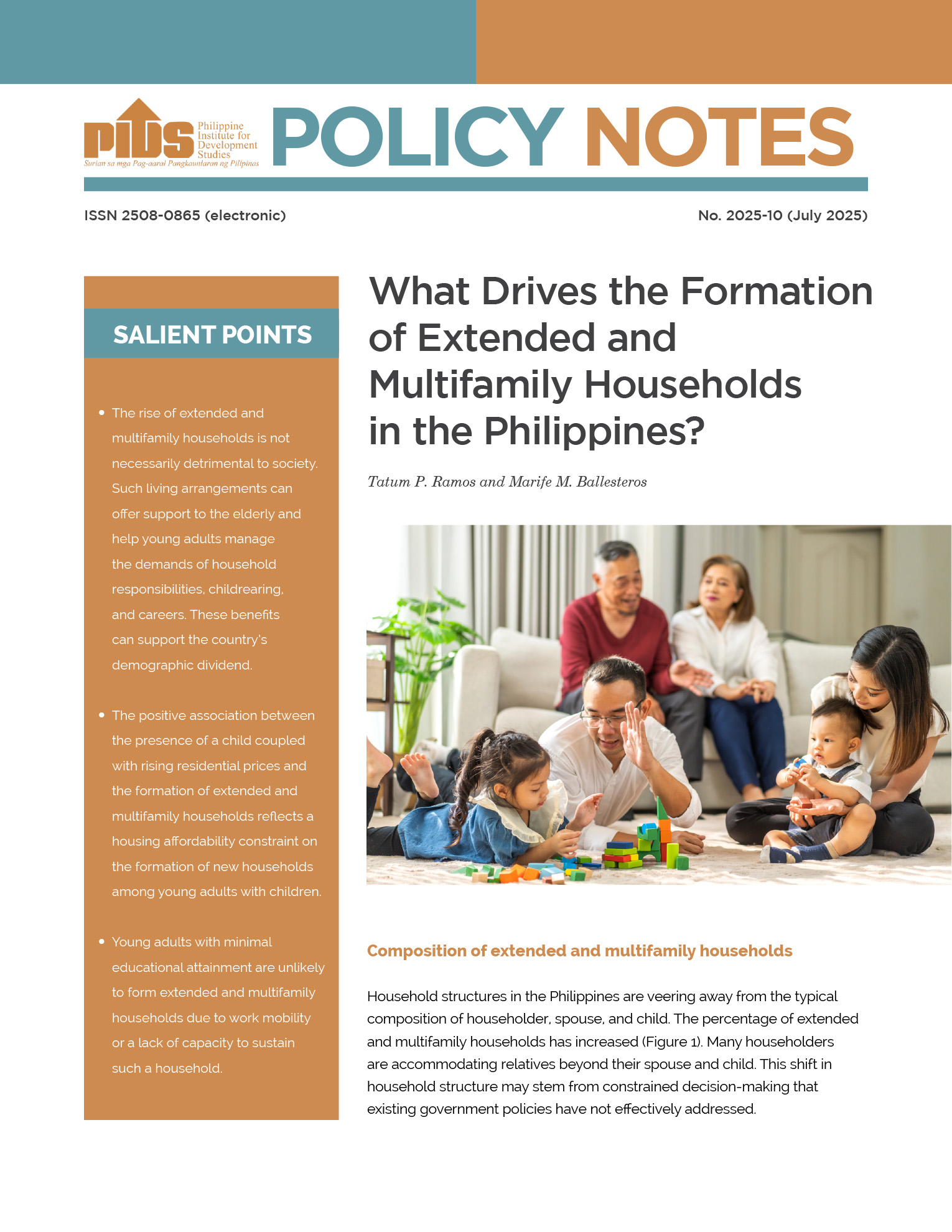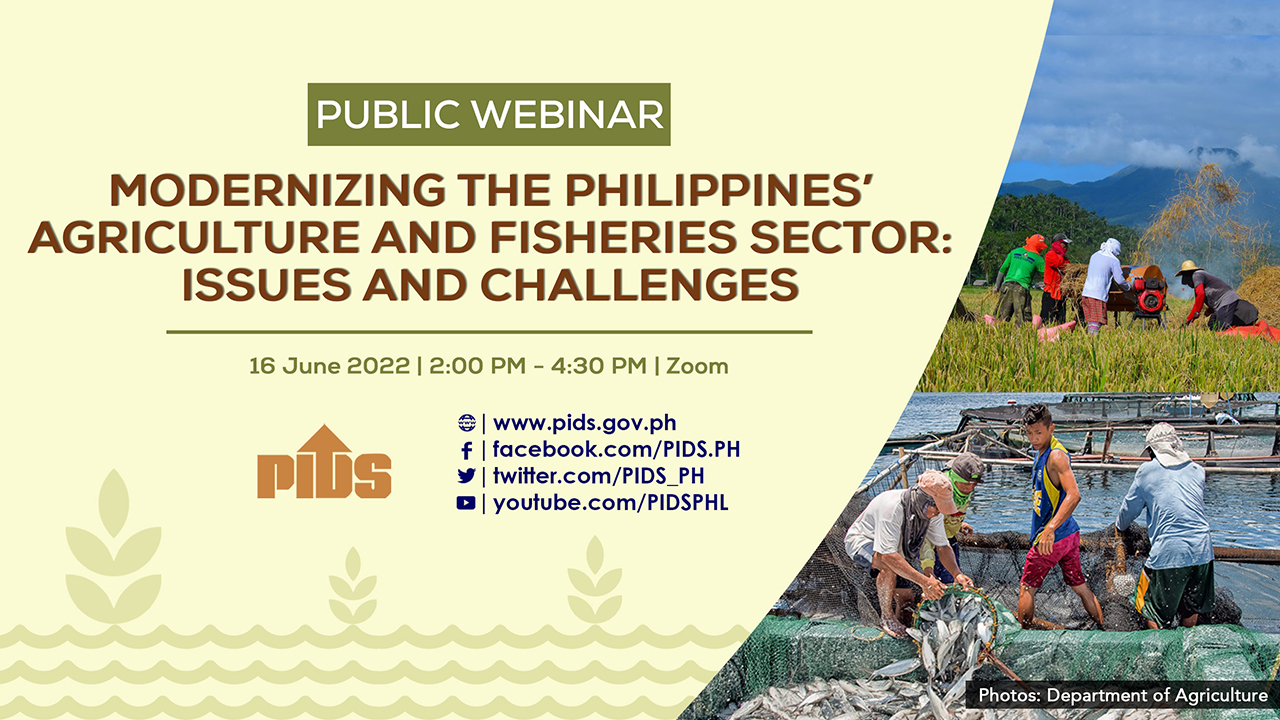The Philippines is still primarily an agricultural country. Aside from the agriculture sector`s crucial role in ensuring food security for the Filipino people, it remains a fact that about 35 percent of the country`s labor force is employed in agriculture. However, as population continues to increase, people leave their rural abode for the city life where they presumably believe that better jobs and higher wages await them. Or where every day, thousands of Filipinos embrace the migration route to join the millions before them to work abroad. This could mean that in terms of job prospects, those in agriculture may not look as attractive as those in other occupations. Hence, the persistent decline in the enrollment in AFNR courses in the country for the past decade or so.
This DRN issue discusses how this situation reflects a broader concern in the agriculture sector. Crucial policies and initiatives from the government in both the agriculture and education fronts are needed to attain sustainable growth in agriculture that would be able to absorb the AFNR workforce and to ensure that the AFNR graduates are "up-to-the challenges" of the times.













